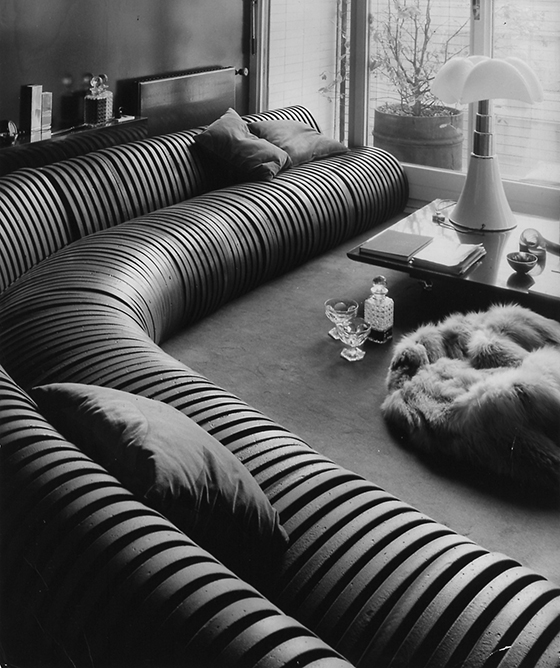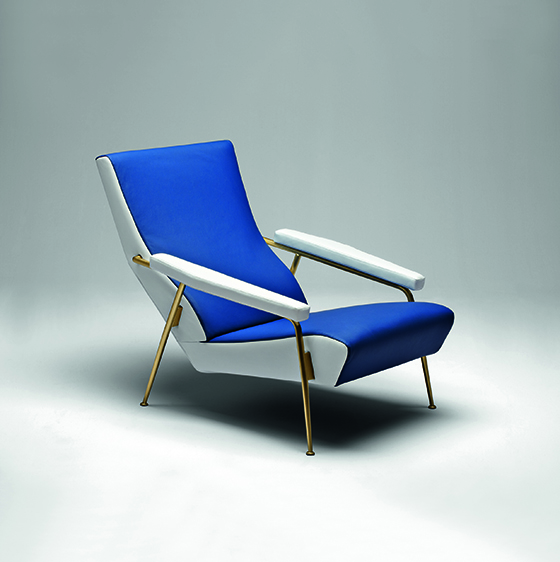Architect Designers Modern: Italian Icons
Texto por TLmag
Brussels, Bélgica
10.11.16
A mixture of poetry and know-how, technical expertise and feeling, research and instinct. The skills transferred from pen to paper, ending in the hands of a skilled craftsman who will mould the next icon. That is what as known as timeless and internationally renowned Italian design.
A mixture of poetry and know-how, technical expertise and feeling, research and instinct. The skills transferred from pen to paper, ending in the hands of a skilled craftsman who will mould the next icon. That is what as known as timeless and internationally renowned Italian design.
After World War II, designers didn't merely find inspiration in expert craftsmanship and new materials research. They were also deeply involved in political and social issues. Philosophical and theoretical studies were integrated into the creative act at every level. This year, two major anniversaries offer the opportunity to celebrate the glory of Made in Italy. Domus Mille number 1000, the collectors' issue, reviews what the magazine has represented ever since 1928. It also looks at the return, twenty years later, of the XXI Triennale di Milano and its international exhibition, Design After Design. That event, held in multiple stunning locations in Milan, questions the meaning of design in a fast-changing world and its role in the current century.
“The ideal house is where there is no constriction.” - Gio Ponti (1891 –1979). Ponti was the founder of Domus magazine and probably the most iconic designer, architect and academic in the post-World War II period. With this quote, he summed up both his thoughts and his concept for his last house on Via Dezza in Milan. The entire structure was designed as an interrupted space, customised and organised to meet each occupants’ needs. The furniture, like the D.153.1 armchair and D.522.2 coffee table, have been recently relaunched by Molteni.
Chemical engineers and Kartell co-founders Anna Castelli Ferrieri (1918 - 2006) and husband Giulio Castelli revolutionised the use of plastics. Ferrieri was one of the first women to graduate from the Politecnico di Milano and is widely recognised as the product designer of iconic furniture like the Componibili. She had the ability to combine functionality, elegance and technological innovation. She also applied this to her architecture work. From her collaboration with architect Ignazio Gardella was born the brilliant red block shape of Kartell's headquarters.
“Women in architecture must not think of themselves as a minority because the minute you do, you become paralysed. It is most important to never create the problem." This statement gives a glimpse of the strong personality of architect and designer Gae Aulenti (1927– 2012). Her work at the Musée d'Orsay and the Museu Nacional d'Art de Catalunya are just two of the main projects that gave her the worldwide reputation as one of the most skilful stage designers. Aulenti worked for the design magazine Casabella-Continuità for ten years. Her Pipistrello lamp, designed for the Olivetti showroom in Paris, celebrated its 50th birthday last year.
“Architecture is provocative because it helps people to live. It’s a form of creativity that takes its origin from life itself.” Cini Boeri has definitely taken much from life. She was a document courier at the young age of 18 and received her degree at the Politecnico di Milano in 1951. Boeri started her career working alongside Gio Ponti and Marco Zanuso. Her research into materials and pliability produced innovative pieces like Serpentone, a flexible sofa designed for Artflex.
His Tolomeo lights have furnished offices all around the world. Michele De Lucchi is one of the most chameleon-like designers on the Italian scene. Initially a member of the radical group Memphis, De Lucchi became Design Director of Olivetti in the 1990s. De Lucchi, within his small-scale company Produzione Privata, never stopped experimenting with new designs, artisans and craft techniques, creating superb objects like the Bonne Nuit lamp. As an architect, De Lucchi is measured and sober, wisely matching his buildings to each context.
While Paola Navone’s creations for prestigious brands like Baxter and Gervasoni are known for their classy, voguish design, she was also one of the leaders of 1970s experimental design. After graduating from the Politecnico di Torino, Navone worked with Alessandro Mendini and Ettore Sottsass as part of the Alchimia group, one of the most progressive design studios. Navone was co-curator of Il Disegno Italiano degli anni 50 in Milan, together with Andrea Branzi and Michele De Lucchi. The exhibition, which had a strong impact on 1980s design, studied and reclassified post-war Italian design.
Alessandro Mendini is one of the most remarkable contributors to European Postmodernism. He is perhaps more appreciated than other Postmodern architects, thanks to his ability to express ideas rather than styles. His extravagant design and architecture production has always existed in the blurry area between art and design. My Prisons, a geometrically decorated, cell-like room, is his latest work. It was designed for Rooms. Novel Living Concepts, part of the XXI Triennale di Milano exhibition. This installation shows that Mendini’s work is still a major reference in the design landscape.
Text: Eleonora Usseglio Prinsi












